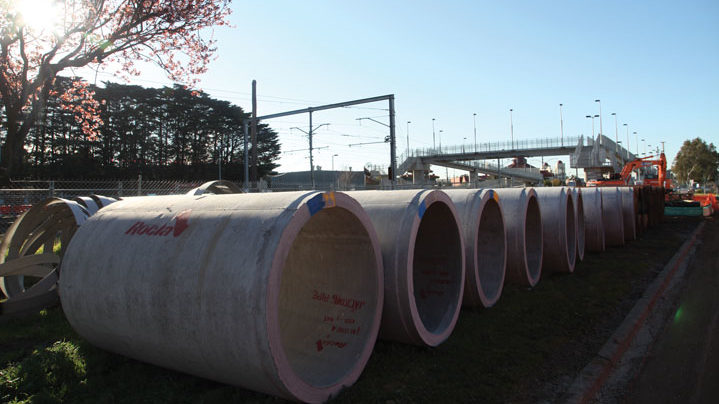There are many reasons why people opt for a micro tunnelled pipe installation, yet the one reason that is by and large the most frequent, is the requirement for accuracy.
Microtunnelling is accurate to +/-25mm, with a number of contractors commonly achieving +/-10mm accuracy on line and grade. The difference between this accuracy and the accuracy seen from pipe profiling is often going to be affected ultimately by the pipe selection.
Not only will the pipe selection affect the accuracy, it will also have a major impact on skin friction and installation costs.
From a contractor’s perspective, the use of a CC-GRP jacking pipe addresses the majority of the issues. It offers a narrow wall with maximal strength and minimal skin friction. The pipe is manufactured with tight tolerances which allows for the accuracy of the installation to be maintained into the final product.
CC-GRP jacking pipe does not require a packing ring, which is often considered to be the weakest point of a jacking pipe. With up to 3 degrees of deflection, CC-GRP jacking pipe allows more manoeuvrability at each joint, which gives the installer more control and more wiggle-room with minimal risk of point loading the joints when pushing pipes on a radius. Also the availability of the pipe in shorter lengths allows for smaller shafts to maximise the keyhole pipeline advantages.
By far, CC-GRP would be the preference for contractors. Within the CC-GRP I would recommend speaking to the contractor individually about their preference of GRP manufacturers.
RCP offers a range of jacking which allow for high jacking loads. The different manufacturers offer slight variations in both tolerances, specifications and wall thicknesses, all of which have an impact on price to install. The increased weight and higher skin friction increases the required jacking load for installation, which in turn, places greater force on the jacking shaft.
HDPE is a pipe typically used for HDD installation, however some of the newer microtunnelling methods like the Vermeer Axis unit can directly install via its pullback method. HDPE offers low skin friction, however the pipe requires a trail out trench which is detrimental to the shaft construction and the overall keyhole pipeline advantages.
Furthermore the need to string out the line to reduce installation time would limit the jobsites where this pipe would be practical to install. The limitation of force that the pipe can manage also creates some issues with the minimal overcut common in micro tunnel installations. The flexibility of the pipe is ultimately detrimental to ultimate precision.
PVC and PP pipes are typically limited to either being installed within a casing pipe or requiring consistent, self-supporting ground, as the pipes in their typical format do not allow for jacking, and can deform the joint under load.
Furthermore, these pipes have collars and typically require centralisers to eliminate collar wear. Also, with the variation in outer profile, most contractors would also recommend grouting the annulus in order to prevent pipe deflection over time due to point loading. The issue is still present when installed within a casing pipe, however there is also a tolerance stack from installing two pipes and centralising and grouting.
There are some new options available in PVC that allow for some jacking and pullback without collars. This does create numerous advantages for the ultimate accuracy and reduces the installation risk of PVC significantly in micro tunnel styled installations. At this stage these pipes are limited in diameters available – please check with suppliers.
Whilst the type of pipe will ultimately impact on the risk and therefore cost of the micro tunnel project, so will the diameter. Whilst the larger diameters create greater costs due to material to be removed and production, the same can be said for small pipes.
In installations under 300mm, contractors are limited to using more displacement styled machines which have limited capabilities in varied ground conditions or would be required to install the pipe within the sleeve, as well as centralise and grout. Should the ground be self supporting, some contractors have the ability to freebore and directly insert the pipe into the ground, centralise and grout.
With the vast range of micro tunnelling machines starting at 300mm there can be significant advantages to upsize 100, 150 and 225 lines to 300mm where possible as it allows contractors to utilise a greater range of equipment through a maximal range of ground conditions. The net effect of the upsize is reduced risk and therefore a greater opportunity to reach successful outcomes. Often this installation can reduce cost as the non requirement to case,centralise and grout are all additional costs not withstanding a reduction of risk equates to a reduction in cost.
As you can see the pipe selection is a critical element of successful micro tunnelling projects and will also greater effect the cost to install not to mention lifetime of the asset aspects.
Look beyond the mud.

